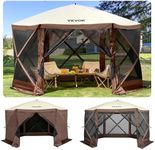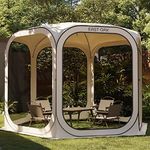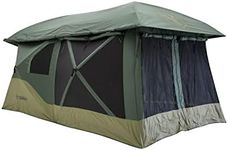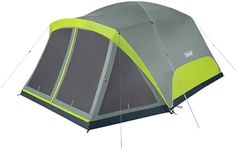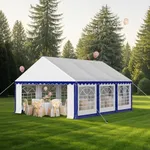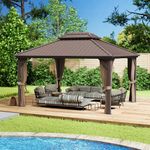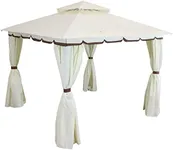Buying Guide for the Best Screen Tents
Choosing the right screen tent can make a significant difference in your outdoor experience. Screen tents provide a comfortable and bug-free environment, making them perfect for camping, picnics, or backyard gatherings. When selecting a screen tent, it's important to consider various factors to ensure it meets your needs and preferences. Here are some key specifications to consider and how to navigate them.SizeSize refers to the dimensions of the screen tent, including its height, width, and length. This spec is important because it determines how many people can comfortably fit inside and how much space you have for furniture or other items. Screen tents come in various sizes, from small ones that fit 2-4 people to large ones that can accommodate 10 or more. To pick the right size, consider the number of people who will use the tent and the activities you plan to do inside. If you need more space for tables and chairs, opt for a larger size.
MaterialThe material of a screen tent affects its durability, weight, and weather resistance. Common materials include polyester, nylon, and mesh. Polyester and nylon are lightweight and water-resistant, making them suitable for various weather conditions. Mesh is used for the walls to provide ventilation and keep bugs out. When choosing the material, consider the climate and conditions where you'll use the tent. For frequent use in different weather conditions, a durable and water-resistant material is ideal.
Ease of SetupEase of setup refers to how quickly and easily you can assemble and disassemble the screen tent. This is important because it affects the convenience and time required to set up your outdoor space. Some screen tents come with simple pop-up designs that can be set up in minutes, while others may require more time and effort. If you plan to move the tent frequently or set it up alone, look for a model with an easy and quick setup process.
WeightWeight is the total mass of the screen tent when packed. This spec is crucial if you need to transport the tent over long distances or carry it by hand. Screen tents can range from lightweight models that are easy to carry to heavier ones that offer more stability and durability. To choose the right weight, consider how you will transport the tent. If you need to carry it for long hikes, a lightweight model is preferable. For car camping or backyard use, weight may be less of a concern.
VentilationVentilation refers to the airflow within the screen tent, which is essential for comfort, especially in hot weather. Good ventilation helps reduce heat buildup and condensation inside the tent. Screen tents typically have mesh walls and windows to allow air to circulate. When selecting a screen tent, consider the ventilation features, such as the number and size of mesh panels. If you plan to use the tent in warm climates, ensure it has ample ventilation to keep you cool and comfortable.
Weather ResistanceWeather resistance indicates how well the screen tent can withstand various weather conditions, such as rain, wind, and sun. This is important to ensure you stay dry and protected during unexpected weather changes. Look for features like water-resistant materials, sturdy frames, and secure anchoring systems. If you plan to use the tent in areas with unpredictable weather, prioritize models with high weather resistance to ensure durability and protection.
Additional FeaturesAdditional features can enhance the functionality and convenience of a screen tent. These may include built-in floors, storage pockets, sunshades, and multiple entry points. While not essential, these features can make your outdoor experience more enjoyable. Consider what extra features would be beneficial for your specific needs. For example, a built-in floor can provide extra protection from the ground, while storage pockets can help keep your space organized.
